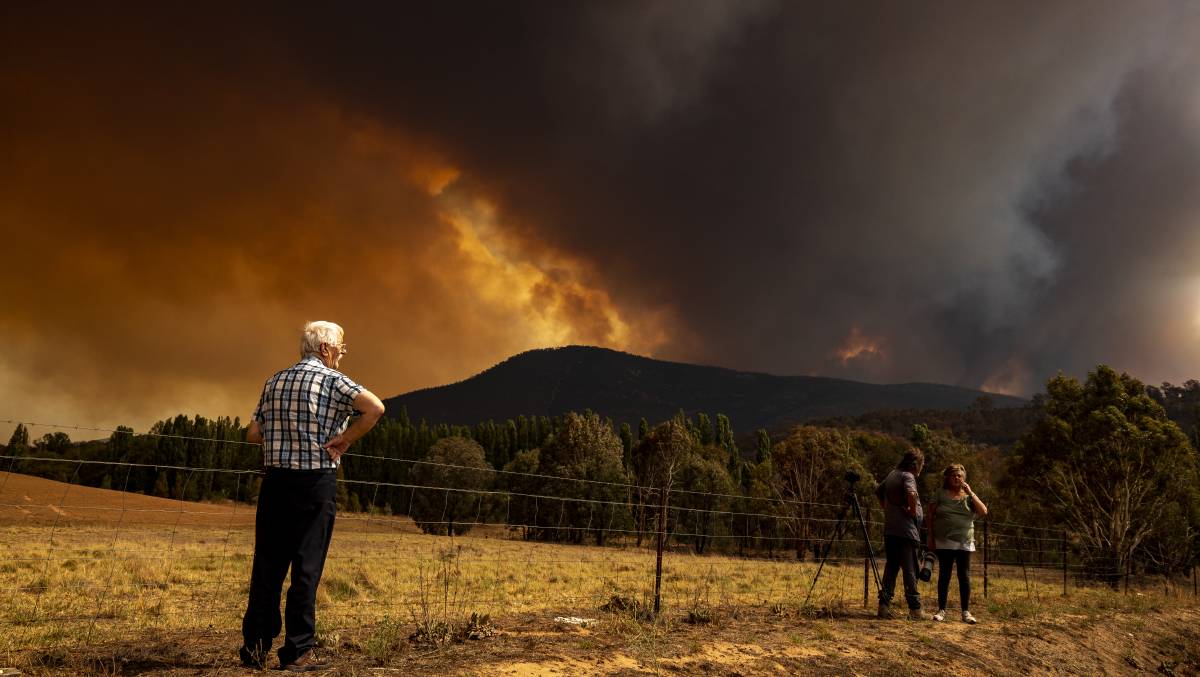As we walked in Namadgi National Park towards the end of last year, the terrifying dryness of the bush was everywhere apparent. Everyone in the group was thinking the same thing – please, may there not be a fire.
As it turned out, the bushfire season across south-eastern Australia proved horrendous, both for people and for the natural environment. In NSW alone, over 2000 homes and many business premises were lost. Much of the Greater Blue Mountains World Heritage Area went up in flames. The Currowan fire, one of the largest single blazes ever recorded, burned from Batemans Bay to Nowra, and until the wind changed, looked as though it would take out Kangaroo Valley as well.
In contrast to NSW, there was very little property damage in the ACT. Firefighters successfully protected Pryor’s Hut and a number of other important structures, including the heritage-listed Orroral homestead. As the fire glowed in the distance, residents in Canberra’s southernmost suburbs watched and waited apprehensively. Fortunately, moderate conditions enabled the fire to be stopped just south of Tharwa.
Compared with the 2003 fires, when many Canberra homes were lost, the outcome could be regarded as a good one. As far as most Canberrans were concerned, the ACT’s firefighting organisations performed in a creditable, coordinated manner. Emergency services commissioner Georgeina Whelan, appearing regularly on the media with Chief Minister Andrew Barr, exuded that aura of credible authority that is so valuable in a crisis.
Admittedly, there were problems. There were rumblings from the Rural Fire Service volunteers who felt that they were excluded from decision-making, and relegated to the status of second-class citizens in the firefighting hierarchy. Commissioner Whelan even apologised to one brigade captain who believed that she had not listened to them when it mattered. The ACT still has not figured out how best to use its volunteers.
Should we try to be much better custodians of the bush than in the past? Yes, clearly we should.
Moreover, it is a moot point how serious the threat from the Orroral fire actually was. Fires do weird things, but the main factor that governs where they go is the wind. And the southerly that blew in late January was nothing like the dreadful westerlies that pushed the 2003 fire through Tidbinbilla and into the suburbs on the western rim of the city.
The question must be asked – could more have been done to save Namadgi? All large fires start as small ones. As with their counterparts everywhere, the firefighters’ overwhelming priority was the defence of property, and in particular of people’s homes. As home owners, we would not want it any other way.

Fire retardant is dropped on Mt Tennent, south of Canberra, in January as a bushfire in Namadgi National Park reaches emergency level. Picture: Sitthixay Ditthavong
Whether the NSW Independent Inquiry and at the federal level, the Bushfires Royal Commission, will be able to untangle these threads remains to be seen. The danger will be that in responding to the salient issues of the Black Summer of 2020, they will simply re-iterate lessons long-known but ignored by politicians and the public, and fail to address those that keep on eluding us.
There is a temptation to focus too much on organisation and not enough on values. Like army commanders, governments and their emergency services tend always to be fighting the last war. In the ACT’s case, the 2003 fires were seared into the memory of everyone who was around at the time. Thus, the Emergency Act passed in 2004, and added-to many times since, makes it quite clear who is in charge in an emergency, and how incidents of various kinds are to be responded to.
As far as policy goes, the key document would appear to be the ESA Strategic Bushfire Management plan. A strategic plan sounds good, but as with many of these documents, there is too much wishful thinking and not enough straightforward discussion. The result is that people who are supposed to fight fires are given very little guidance as to the kinds of outcomes the community wants them to achieve. Those “on the ground” must give form to values in the best way they can.
What are these values to be? It has been apparent for some time that the traditional way of doing things has not been working. Should we try to be much better custodians of the bush than in the past? Yes, clearly we should.
Can we ever see bush as “country”? Farmers are obliged to make a living from their land, and without their work, the rest of us would starve. Some farmers are excellent conservationists, but many are not. As retirees and others leave the cities, the best parts of the coast are in danger of being loved to death. If every available patch of bush is cleared for housing, what will distinguish these places from the suburbs most of their inhabitants left behind?
Many Australians still do not love the bush. The fact that it burns does not endear it to them. As well as being fire-prone, eucalypts are regarded as a profligate, unpleasant species that sucks up the nutrition in the soil. Indeed, trees in general are regarded with suspicion.
New values, new concern and a new will are needed. It will be unfortunate if, between them, the NSW Inquiry and the Royal Commission see the bush, rather than us, as the problem. Each inquiry has a wonderful opportunity to start preparing the groundwork for a fresh commitment to our national estate.

